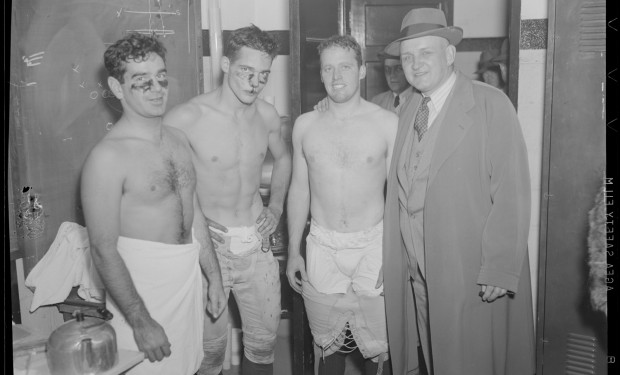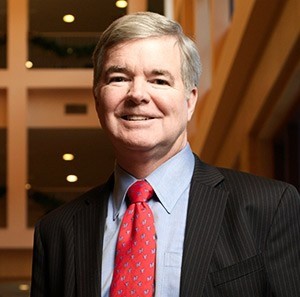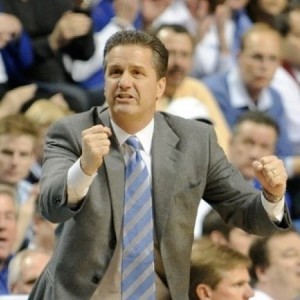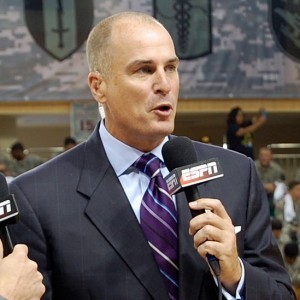Pay-For-Play: The inevitable professionalization of college athletics
The NCAA’s tight grip on student-athletes weakens as the movement to pay players gains steam.
The Louisville Cardinals men’s basketball team’s 2013 national championship run had all of the drama of a Hollywood movie. After a brutal, freak injury to guard Kevin Ware in the Cardinals’ Elite Eight win over the Duke Blue Devils, the team rallied together for two come-from-behind wins to beat Wichita State and Michigan. As they lowered the hoop to give Ware a piece of the national championship net, the Cardinals basked in their One Shining Moment.
To any lover of March Madness, the 2013 Louisville Cardinals’ national title exemplifies the pure, idealistic spirit of collegiate sports. And really, who would not be moved by the story of young men banding together in the face of adversity to bring glory to their beloved university? It certainly has a more wholesome feel than the tale of a league of professional basketball players who overcome team rivalries to stage a lock out, united over their common ground of contract disputes. But do not be fooled by the smoke and mirrors: the reality is that collegiate sports and their professional counterparts are much more alike than they are different.
In exchange for scholarship funds and other provisions, student-athletes agree to abide by stringent rules that govern nearly every aspect of their collegiate lives.
In its own words, the National Collegiate Athletics Association (NCAA) is “a membership-driven organization dedicated to safeguarding the well-being of student-athletes and equipping them with the skills to succeed on the playing field, in the classroom and throughout life.” The NCAA comprises more than 1,200 schools, conferences, and affiliate organizations. Each year, nearly 50,000 student-athletes compete in eighty-nine NCAA championship events in twenty-three sports.
One of the core focuses of the NCAA is academic success. The organization and its member schools award over $2.4 billion in scholarship funds to student athletes each year. Along with athletic scholarships, student-athletes receive access to medical care, academic support, and training facilities. In exchange, student-athletes agree to abide by stringent rules that govern nearly every aspect of their collegiate lives and have been promulgated by the NCAA for many years.
If these rules are broken, harsh penalties may be imposed. On August 1, 2013, newly enacted changes to the NCAA Division I infractions process took effect. Passed in an effort to increase accountability at all levels of collegiate athletics, the reforms included changes to the organization’s approaches both to member violations, as well as its own ability to penalize wrongful conduct.
The workability of these rules and the NCAA as a whole in today’s society remains to be seen.
In order to remain eligible to compete on a collegiate level, student-athletes are prohibited from receiving a salary, accepting material benefits from school boosters, or contracting with professional agents. Simple enough in theory, but the NCAA’s application of these rules far overreaches.
In December 2012, University of Kentucky men’s basketball head coach John Calipari complained that his players were inadvertently losing weight due to an NCAA rule that limits the number of meals that scholarship athletes may eat. Calipari said that his players might burn up to 2,500 calories in one practice, and they needed more food to refuel. His criticism echoed the words of Becci Twombley, dietitian for student-athletes at the University of Southern California, who lamented, “Food is placed in the same category as a car in the NCAA’s eyes.”
Illustrating that such complaints are far from an exaggeration, in May 2013, a West Coast Conference school self-reported receipt of extra benefits when a member of its women’s golf team washed her car on campus. The golfer was required to pay $20.00, the value of the hose and university water. After investigation, the NCAA did not find the carwash to constitute a violation. But when the rules are so unclear and absurd that a school is afraid not to report such an incident, the system is undoubtedly flawed.
Can the NCAA really claim the moral high ground in this fight?
Theoretically, the NCAA’s policies are designed to promote fairness and integrity amongst member schools and to protect the amateur statuses of collegiate athletes. However, the workability of these rules and the NCAA as a whole in today’s society remains to be seen.
Over the last few years, the so-called “pay-for-play debate” has grown from quiet background chatter to a dull roar. Discussions of the issue of paying collegiate athletes for their services have shifted from entirely hypothetical (Should they be paid?) to practical (How should they be paid?).
While it is certainly a violation for a player to profit off of his or her own name and likeness, the NCAA seems to be above its own rules.
The pay-for-play debate has many opponents, none more vocal than the NCAA. Such a proposal violates the organization’s core purpose and offends the very meaning of amateurism in athletics. But can the NCAA really claim the moral high ground in this fight? Wipe away the self-imposed holier-than-thou façade, and it’s evident that the Emperor has no clothes.
The NCAA makes $6 billion annually. In 2010, the organization entered into a 14-year, $10.8 billion contract with CBS and Turner Broadcasting that covers March Madness broadcast rights alone. And while it is certainly a violation for a player to profit off of his or her own name and likeness, the NCAA seems to be above its own rules. Former Texas A&M quarterback Johnny Manziel was punished at the start of the 2013-14 college football season for allegedly accepting payments for his autograph. Meanwhile, at shopNCAAsports.com, fans could find and purchase a likeness of his football jersey simply by searching for his last name. The NCAA removed this search functionality shortly after Jay Bilas, a former Duke basketball player and current ESPN analyst, tweeted of the hypocrisy. Bilas, who has long been a very vocal NCAA critic and an advocate of paying collegiate athletes, is a practicing attorney in Charlotte, North Carolina.
While it seems an unfair double standard that the NCAA should be allowed to profit so substantially from its unpaid labor, there are more serious issues at stake beyond a collegiate player’s current worth. Competition at any level takes a toll on an athlete’s entire body, and doctors have only just begun to research the long-term effects of concussions on football players. The future value of an amateur athlete who aspires to a future in professional sports depends on his ability to stay healthy. His body is, quite literally, his meal ticket. Even barring catastrophic injury like the one that Kevin Ware suffered, a student-athlete is unlikely to leave college for the pros having at least slightly depreciated in value.
With these concerns in mind, Northwestern University football players last month became the first collegiate athletes to formally seek union representation with the National Labor Relations Board. Supporting them is President Ramogi Huma of the National College Players Association, an organization that advocates for collegiate athletes and seeks to change NCAA rules. Huma, a former linebacker for the University of California at Los Angeles, filed a petition on behalf of the players through which they seek recognition as employees. Unsurprisingly, the NCAA vehemently opposed the move, calling it an undermining of the collegiate purpose: education.
The illusion of amateurism in college athletics can be maintained no longer.
But if extracurricular employment undermines education, shouldn’t NCAA member institutions prohibit all students from working while attending school? And if educating student-athletes is truly the ultimate goal, how are the claims of Mary Willingham, a former reading tutor to athletes turned whistleblower at the University of North Carolina at Chapel Hill (UNC), explained? Willingham said that 60% of the athletes she worked with from 2004-2012 were only capable of reading at fourth-to-eighth-grade levels, a statistic that she alleged was typical of Division I programs.
Willingham has also filed a brief supporting the player-plaintiffs in O’Bannon v. NCAA, a class action lawsuit filed by current and former college athletes that is scheduled for trial in June 2014. Alleging antitrust and intellectual property law violations, the players seek to overturn the NCAA’s rules that prohibit athletes from entering into group licensing agreements. If their suit is successful, it will constitute a huge victory for proponents of paying players.
College sports are a big business that brings the NCAA and its member schools enormous revenues. As Willingham noted, the “education” that Division I student-athletes receive is so lacking that it cannot even be said that they are receiving the full cost of attendance in exchange for their athletic gifts. The illusion of amateurism in college athletics can be maintained no longer.









